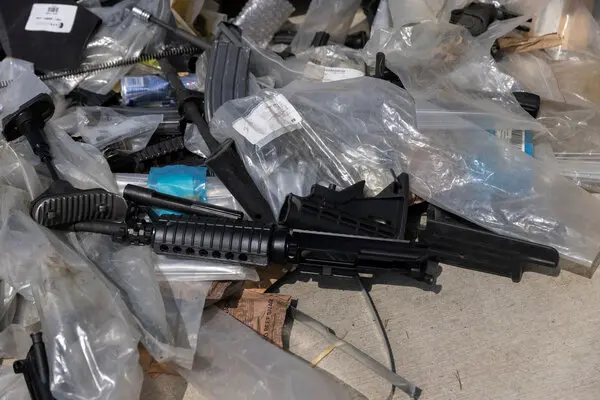Nearly half a million weapons seized by the Taliban after their 2021 takeover of Afghanistan are now missing, sold, or smuggled to militant groups, according to sources who spoke to the BBC. This troubling case of Taliban weapons smuggling has been confirmed by United Nations reports.
When the Taliban regained control, they captured almost one million pieces of military equipment. Most of this arsenal had been supplied and funded by the United States, a former Afghan official told the BBC anonymously. The haul included modern American rifles like the M4 and M16, along with older arms from years of war.
Sources linked to a private UN Security Council Sanctions Committee meeting in Doha revealed alarming details. The Taliban themselves admitted that around 500,000 weapons are now “unaccounted” for. This massive figure was confirmed by multiple sources from the committee.
The UN’s February report also raised the alarm. It stated that Al-Qaeda-linked groups, including Tehreek-e-Taliban Pakistan (TTP), the Islamic Movement of Uzbekistan, the East Turkestan Islamic Movement, and Yemen’s Ansarullah, have been accessing Taliban-captured arms. Many weapons, initially seized by the Taliban, have found their way to militants through the booming black market.
Responding to these findings, Taliban deputy spokesperson Hamdullah Fitrat flatly denied the reports. “All light and heavy weapons are securely stored,” he insisted. “We strongly reject any claims of Taliban weapons smuggling or loss.”
However, the UN’s 2023 report challenges the Taliban’s claims. It states that local Taliban commanders, who often act independently, were allowed to keep about 20% of captured US weaponry. This policy has fueled the illegal arms market, making it a rich source of arms for the Taliban and others.
The gifting of weapons among commanders and fighters has become common, strengthening personal power bases and increasing Taliban weapons smuggling activities. A former journalist from Kandahar reported that for a year after the Taliban’s return, an open arms bazaar thrived in the city. Although now hidden, the trade continues over WhatsApp, facilitating sales of American-made arms to local commanders and wealthy buyers.
Meanwhile, the U.S. Special Inspector General for Afghanistan Reconstruction (SIGAR) has admitted challenges in tracking weapons. A 2022 SIGAR report highlighted long-standing issues with the Pentagon’s monitoring of equipment in Afghanistan. It also criticized the State Department for offering limited and often inaccurate updates about the abandoned equipment, an allegation the department disputes.
The situation remains politically sensitive in the United States. Former President Donald Trump voiced strong criticism, vowing to recover the lost weaponry, which he estimated at $85 billion, though experts dispute that figure. “Afghanistan is one of the world’s biggest sellers of military gear,” Trump said during a cabinet meeting. “We left them with everything. I want it back.”
In response, Taliban spokesman Zabiullah Mujahid told Afghan media that the captured arms symbolize victory. “We seized these weapons from the previous administration,” he said. “We will use them to defend the country and counter any threats.”
Despite American claims that equipment was disabled during the withdrawal, the Taliban have created a capable military. Hundreds of vehicles and helicopters remain in storage. Though the Taliban lack the skill to operate complex machinery fully, simpler equipment like Humvees is now in regular use.
John Sopko, the former head of SIGAR, dismissed Trump’s idea of recovering the weapons. He called any recovery effort “pointless,” arguing that the cost would far exceed the value.
As debates continue, the issue of Taliban weapons smuggling and the spread of dangerous arms to militant groups remains a growing concern. The risk these arms pose to regional and global security cannot be ignored.


